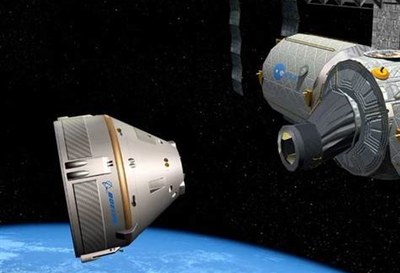Congress and NASA: expedite commercial crewby S. Alan Stern and Frank DiBello
|
| No nation that is wholly dependent on another nation for its human access to space can be considered the world leader in spaceflight. |
When policy makers accepted this bad situation, it was expected to persist for only two or three years, making a bad situation perhaps palatable given the tough fiscal times. But now, barely 100 days into our human spaceflight access gap, it’s looking more and more like the gap will lengthen to five or six or even more years to 2016 or 2017—possibly even to 2018—or beyond.
Why is this happening?
Congress is to blame for this by planning to gut the Administration’s request of $850 million for its Commercial Crew program—the fastest paced and surest effort within NASA to restore US human space access to orbit. Forces within NASA are also to blame, for saddling the Commercial Crew program with costly and schedule-stretching delays created by complex and onerous contracting methods and project oversight practices, which themselves add several years to the gap.
What are our trusted stewards of this great nation’s civil space program thinking? Consider, for as long as the US is in this gap:
- All access to the International Space Station (ISS) is dependent on a problem-prone Russian transportation system, jeopardizing our ability to staff the station. Both Proton and Soyuz have had technical mishaps in recent years, including two launch failures in the past few months that, if repeated, could very realistically create the need to abandon the ISS.
- The high cost of US astronaut transport aboard Russia’s Soyuz is draining our human spaceflight budget and costing thousands of American jobs at home. These costs, estimated to be two to three times as expensive per seat as what US commercial crew systems will cost, are also significantly slowing our ability to begin exploring beyond Earth orbit.
- Our astronaut corps is limited to two or three people being launched every year, and our ability to fully utilize our $100-billion space station is severely hampered. Only when the gap ends can we expect to resume a significant rate of astronaut launches and substantially greater research utilization of space station.
- Our perception as the world’s leader in human spaceflight is damaged, for no nation that is wholly dependent on another nation for its human access to space can be considered the world leader in spaceflight.
None of this is good. There is no silver lining here: not for our economy, not for our standing as a world leader, not for our investment in the ISS, and certainly not for NASA’s role in inspiring science, technology, education, and mathematics (STEM) education.
| It is time for elected leaders, NASA, and the nation’s space community to wake up to the urgency of this situation. |
What should be done? We believe that Congress, the Administration, and NASA must come to consider our gap in human launch capabilities a matter too debilitating to extend by any amount, and take the following actions:
- Congress, for its part, should fund the development of commercial crew launch capabilities to orbit at the requested level of $850 million, even if that means slowing other development efforts within NASA.
- NASA, for its part, should streamline the business and technical processes it imposes on its commercial crew providers with the goal of ending our human space launch capability gap as soon as is practically feasible.
- And the Administration, for its part, should be urging Congress to fully fund commercial crew programs and directing NASA administrator Charles Bolden to mobilize NASA to achieve the fastest possible commercial crew launch capability to ISS.
It is time for elected leaders, NASA, and the nation’s space community to wake up to the urgency of this situation. It is time for action on each of their parts. It is time for leadership. It is time for the great institutions of this great nation to respond by shrinking, rather than lengthening, our human spaceflight launch capability gap.
